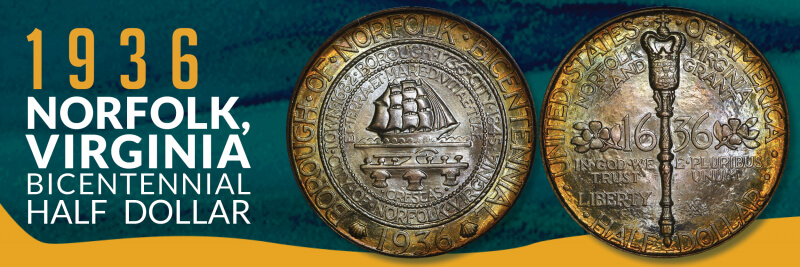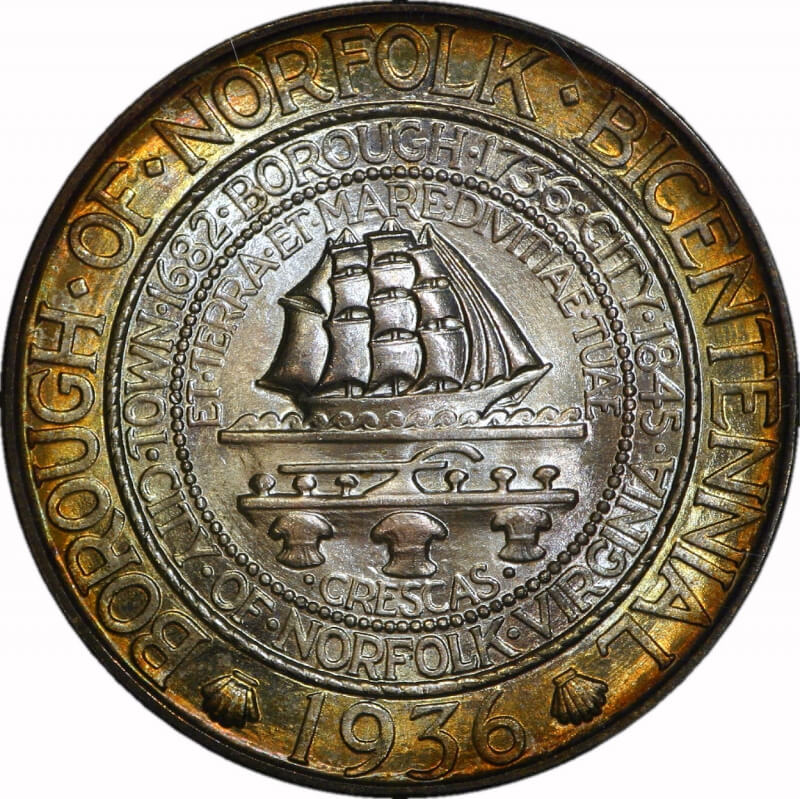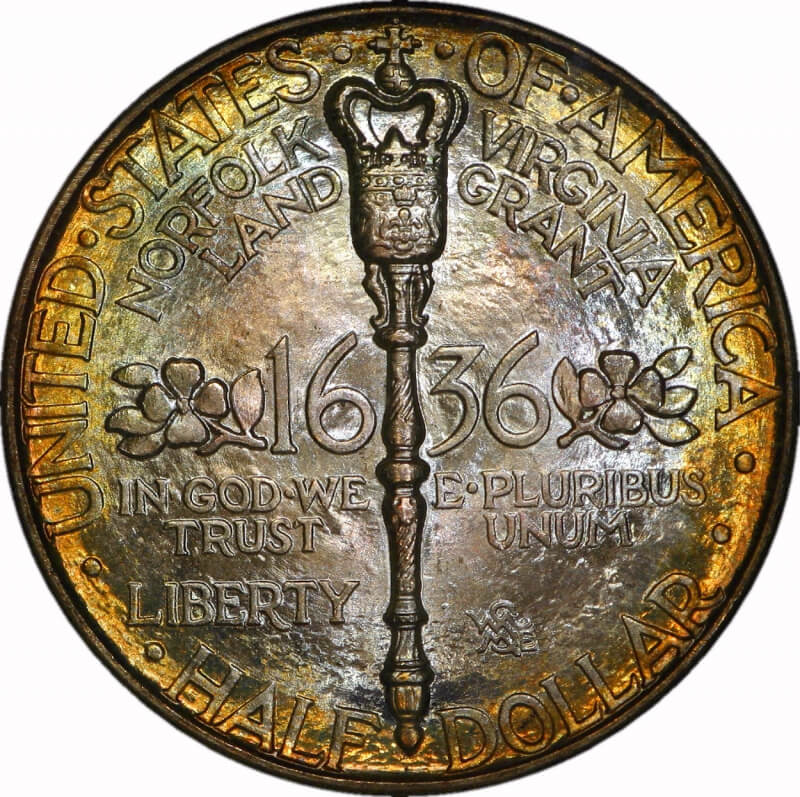
1936 Norfolk, Virginia, Bicentennial Half Dollar
Click the images above for enhanced view.
Purpose:
To commemorate the 300th anniversary of the Norfolk land grant and the 200th anniversary of the establishment of Norfolk as a borough.
Maximum Number Authorized: 25,000 pieces.
Sale Price: $1.50
Designs:
Obverse – William Simpson and Marjorie Simpson
The official seal of the city of Norfolk, Virginia, consisting of a three masted ship sailing to the right above the waves. Underneath the ship is a plow and three sheaves of wheat. The word “CRESCAS,” meaning “may you prosper,” appears below the wheat. The motto “ET TERRA ET MARE DIVITIAE,” meaning “both land and sea are your riches” is located above the ship. An inner border includes “TOWN 1682 BOROUGH 1736 CITY 1845 CITY OF NORFOLK VIRGINIA.” An outer border displays the anniversary date of 1936 between two scallop shells and “BOROUGH OF NORFOLK BICENTENNIAL.”
Online Resource: https://commons.wikimedia.org/wiki/File:Seal_of_Norfolk,_Virginia.png
Reverse – William Simpson and Marjorie Simpson
The Royal Mace with the British crown on its top is in the center of the coin. The date 1636 is separated by the mace and has sprigs of dogwood on both sides. “NORFOLK VIRGINIA LAND GRANT” is found above the mace and crown. The designer’s initials are located above the “LL” in “DOLLAR.”
Online Resource: https://www.andrewcusack.com/2005/a-250-year-old-mace-in-the-old-dominion/
Popularity:
25,000 dollars were struck for sale to the public. Initial sales were slower than expected. Some collectors resented the British crown on a United States coin. A total of 8,077 remained unsold and were returned to the Mint.
Trivia:
-
The anniversary date of 1936 appears on the coin but the coin was minted in 1937.
-
Five dates appear on the coin: 1636, 1682, 1736, 1845 and 1936.
-
The Royal Mace has been present at several Norfolk celebrations. In 1862, Norfolk Mayor William Wilson Lamb hid the mace under the hearth of his home as Union troops were nearing the city.
-
An outgoing mayor would often give the Royal Mace to the incoming mayor as a symbol of the transfer of power.
-
The Royal Mace was lost at one point and found in a pile of trash at the Norfolk police station in 1894. It was then transferred to the Norfolk National Bank for safekeeping.
For more information:
Encyclopedia of the Commemorative Coins of the United States by Anthony J. Swiatek
KWS Publishers (2012)
Commemorative Coins of the United States Identification and Price Guide by Anthony J. Swiatek
Amos Press Publishers (2001)
Norfolk’s Historic Mace by W.F. Duckworth
Published by The National Bank of Commerce (1959)
References:
Encyclopedia of the Commemorative Coins of the United States by Anthony J. Swiatek
KWS Publishers (2012)
The Encyclopedia of United States Silver & Gold Commemorative Coins 1892 to 1954 by Anthony Swiatek and Walter Breen
Arco Publishing, Inc. (1981)

